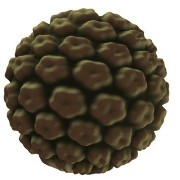 Photo: Getty Images
Photo: Getty Images
It has long been known that HPV (human papillomavirus) strains 16 and 18 cause the majority of cancers relating to this virus. Recent approval by the FDA of the Roche HPV test, which incorporates genotyping for these particular strains, will be helpful when it comes to monitoring patients who are at higher risk than others in developing persistent infections and subsequently cancer.
There are very well-developed guidelines by the Society for Colposcopy and Cervical Pathology to assist the practicing physician in the appropriate treatment of women with varying degrees of disease, in addition to post-treatment recommendations.
In a recent study published in the Journal of Lower Genital Tract Disease by Radha Malapati, M.D., et al, he studied factors that influence the persistence or recurrence of precancerous lesions, known as cervical intraepithelial neoplasia, after a LEEP procedure. LEEP, Loop Electrosurgical Excision Procedure, is one option for removing precancerous lesions, which are considered more serious in nature.
Surprisingly, 52 of the 769 patients selected for the study had to be excluded secondary to “ineligible entries, index cytology report not recorded or incorrect medical record numbers”. Since a preoperative cytology report would have been necessary for treatment in the first place, the fact that cytology reports were missing is an omission and lack of thoroughness on the part of the treating physician.
The ASCCP (American Society for Colposcopy and Cervical Pathology) previously conducted a survey, which showed a significantly large percentage of the practicing medical community failed to understand the current guidelines. It would appear that not only is there a lack of knowledge on the part of the physicians, but a lack of adequate record keeping as well.
Review of the “conclusions” for Dr. Malapati’s study is even more direct when it comes to following the established guidelines regarding follow-up after treatment with LEEP.
Of the 717 remaining patients, the rate of follow-up was a mere 64.7 percent. What is more alarming is that, of the nearly 65 percent who were provided follow-up, almost 25 percent (24.7 percent) were shown to have persistent or recurrent disease.
Given the criteria outlined in this study, the guidelines call for a follow-up after the LEEP procedure.
While Dr. Malapati’s study clearly states that “adherence with follow-up was poor, and the rate of persistence and recurrence was high”, this is undeniably too low a rate to provide adequate protection to the women who were treated.
Other studies with less than adequate follow-up will typically state the percentage of those lost to follow-up for any number of reasons. However, no such mention was made in this study indicating that these patients were actually “lost” to follow-up and couldn’t be included.
The current guidelines call for follow-up in all individuals post LEEP and yet nearly one-third of physicians failed to do so, thus leaving these patients subject to continued persistence of the virus and potentially conversion to invasive cervical cancer.
This only confirms the ASCCP’s findings that physicians are not educated with respect to the current guidelines, which includes this type of post-LEEP follow-up.
Dr. Malapati’s study confirms the ASCCP findings. Both point to the dire need to educate the practicing physician. While it is already known that an increase in education for women with respect to the importance of regular screenings and Pap tests is needed, there appears to be just as significant a need for an educational program for physicians in whom these patients place not only their trust, but their lives.
Sources:
http://journals.lww.com/jlgtd/Abstract/2011/07000/Factors_Influencing_Persistence_or_Recurrence_of.1.aspx
http://www.asccp.org/ConsensusGuidelines/ConsensusGuidelinesOverview/tabid/5956/Default.aspx
Reviewed July 22, 2011
by Michele Blacksberg R.N.
Edited by Shannon Koehle





Add a Comment1 Comments
HPV is the most common sexually transmitted infection in the United States. About 24 million people are currently infected with genital HPV. Up to 80% of men and women will become infected at some time in their life. If you are confused at this moment, I recommend a support site hdating. net to you to meet more friends who suffer it also, you will be encourage greatly.
July 23, 2011 - 11:24pmThis Comment